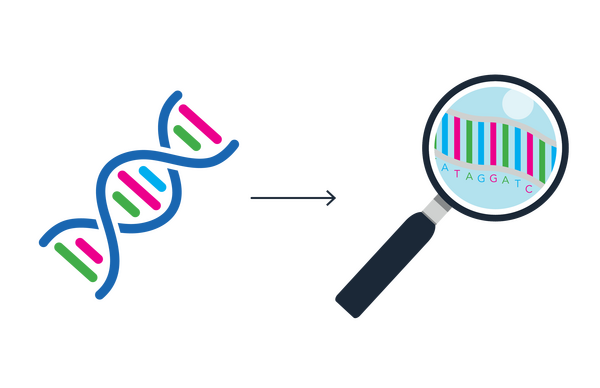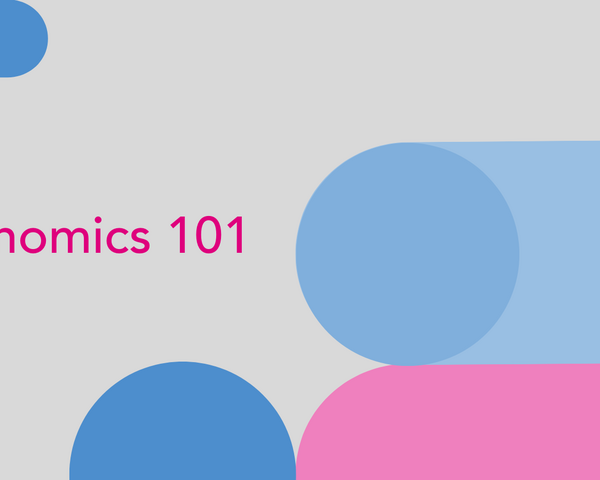What happens when I go for whole genome sequencing?
By Florence Cornish on
Whole genome sequencing allows us look at lots of different genes in a person’s genome, with one single test.
A genome is a person's entire genetic sequence – their bodies instruction manual. It contains thousands of different genes, and each one tells our bodies how to grow and develop.
Sequencing someone's genome can give us important information about their health.
In this blog, we explain what it’s like to get whole genome sequencing, and how it could lead to a genetic diagnosis.
Why might someone get whole genome sequencing?
There are lots of reasons that someone might get whole genome sequencing.
For example, a person might have a condition that is likely to be genetic, but the medical team wants to identify the exact genetic cause.
In other cases, someone might have been diagnosed with cancer, and whole genome sequencing can help provide more information about the cancer type and how it could be treated.
In the NHS, people with suspected rare conditions and cancers could be offered whole genome sequencing.
What are the potential benefits of whole genome sequencing?
A key benefit of whole genome sequencing is the possibility of a diagnosis.
If a specific condition is identified, this can provide an explanation for the patient about what’s causing their symptoms, and bring an end to further unnecessary tests.
It can also provide valuable information about how the condition might affect other family members, allowing people to plan for the future, as well as providing the opportunity to connect with others in the patient community.
Furthermore, a genetic diagnosis can create awareness of symptoms that may need to be monitored. For example, Marfan syndrome is a rare genetic disorder that affects the body’s connective tissue, sometimes causing severe problems with the heart.
Following a diagnosis of Marfan syndrome, people may wish to get regular echocardiograms to check their heart health, allowing them to receive surgery or take preventative medication if necessary.
You can read more about living with Marfan syndrome in Clarissa’s story.
What happens when a person physically goes to get the test?
In most cases, an individual will see a specialist doctor to do a full health assessment. This might be a genetics doctor, but it could also be a doctor specialising in another body system.
If the individual and their family give consent for the test, someone in their healthcare team will take the sample. Usually this is a blood sample, but occasionally a saliva sample or cheek swab instead.
For people with rare conditions, it is also often useful to perform whole genome sequencing on their parents as well. This makes it easier to separate out genetic changes that are more likely to be significant, from those that just make up the harmless genetic variation that makes each of us unique.
What happens to this sample?
Although whole genome sequencing reads the entire genetic code, not every single gene will end up being analysed.
Once taken, samples get sent to a genetics lab where the DNA will be extracted for genome to be sequenced. Scientists then identify which genetic changes are most likely to be significant.
If there is a clear-cut result, a diagnosis can be fed back to the patient and their family, usually by the clinician who arranged their testing.
Does everyone receive a diagnosis?
It is important to note that not everyone will get a genetic diagnosis from their whole genome sequencing test.
This may be for a few reasons, for example if the condition being tested for isn’t genetic, or, the genetic change causing the condition hasn’t been discovered and recorded yet.
Genetic tests like whole genome sequencing can also raise uncertainties. Sometimes the test finds variants of uncertain significance, which arise when scientists aren’t certain whether specific genetic changes are responsible for causing the condition or not. Even in cases where a diagnosis is made, there may still be unanswered questions about how the condition can be treated, or what the outlook will be for that persons’ future – especially if the condition is very rare.
In the NHS, data from whole genome sequencing is stored and can be looked at again in the future, either in light of new evidence or once our knowledge of genetics has improved.
One of the ways Genomics England is helping to do this is via the Diagnostic Discovery pathway. This process allows scientists and researchers to share newly identified genetic changes with NHS clinical teams, potentially resulting in new diagnoses for those who have had whole genome sequencing in the past.
And finally...
Prefer to listen? Check out our Genomics 101 podcast, ‘What happens when I go for whole genome sequencing?’
Or, learn more about genomics by reading our other blogs.

